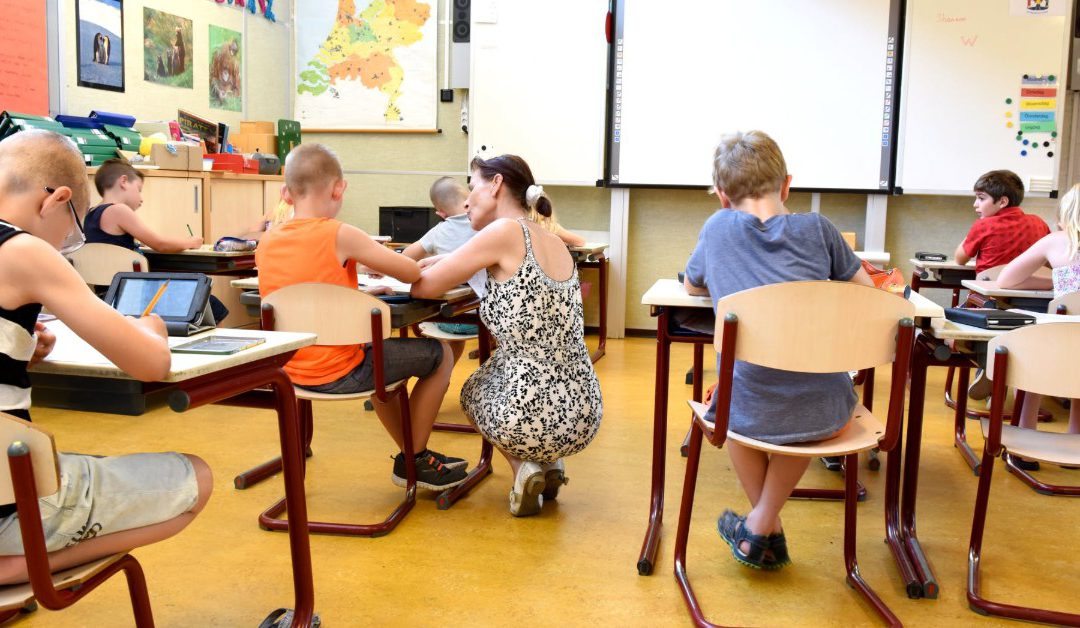Culture Project Ideas for High School and How To Execute Them
 When cultural diversity is as endangered as today, it is vital high school students are taught about it. You need to implement proper culture projects into your classroom so that your students can learn how varied our world is—and we have just the ideas that you’re looking for.
When cultural diversity is as endangered as today, it is vital high school students are taught about it. You need to implement proper culture projects into your classroom so that your students can learn how varied our world is—and we have just the ideas that you’re looking for.
You could be teaching a multicultural class, or maybe your students share the same cultural identity. Either way, you need to raise their awareness of the many different cultures on our planet. They have to know that cultures shape the behaviors and mentalities of the people who belong in them. Only then can your students be prepared to go out into the world and interact with it both in their personal and professional lives.

Credit: radovan
What Is Culture Teaching in High Schools?
Traditionally, teaching students about culture was reserved for certain chunks of foreign language classes. Even then, high schoolers would not get far beyond learning what constitutes only the target language’s visible culture, i.e., what people of that nation eat, how they dress, or what films and music they make. Today, the need to incorporate cultural studies into the schools’ curriculum is stronger than ever.
The biggest reason for it is that the students of a particular class belong to various cultures. It’s not only important to acknowledge that diversity between yourself as a teacher and the young people you teach, but also among the students themselves.
The way you can teach culture to your students varies. Before you get into it and start thinking of classroom activities and high school culture project ideas, you need to be the one who is culturally competent so that your students can learn from the example you set.
Before a High School Culture Project…


Credit: Martin Balle
When scholars attempt to describe or define culture, they usually employ a metaphor of an iceberg. Only a small part of an iceberg is what peeks above water, just like the dress, cuisine, or language are only outward symbols of a person’s culture. The essence of their cultural identity is—much like the bulk of an iceberg—hidden beneath the surface.
You need to understand how cultures shape people if you want to build on diversity in your classroom.
To this end, you might want to examine the following notions:
- What the extent to which one culture shapes an individual is
- Whether you possess social and emotional intelligence skills to recognize it in your students
- Cultural stereotypes you might not be aware you’re harboring
…Get To Know Your Students’ Cultures
Before you can teach your students how to differentiate among many cultures and how they impact people, you need to see those impacts in your students. This particularly holds true if you’re teaching a multicultural class—which in our day and age, you most likely do.
You can start by exploring how the culture of every one of your students determines their values, study motivation, and learning styles.
For example, if some of your students come from a culture that values unobtrusiveness and respect for authority, they might be less willing to raise their hands in your class or ask questions about the topics you’re teaching. It doesn’t mean that they are inapt learners or don’t approach the subject material with a critical mindset. It may be challenging for them to accommodate their behavior according to your cultural practices.
…Hone Your Social and Emotional Intelligence Skills
To recognize specific behaviors in your students and their potential effects, you should work on developing your social and emotional intelligence skills. They are essential tools for any professional to have but are particularly critical for educators.
Since social intelligence and emotional intelligence have many similar characteristics, they are often confused one for another. Here’s a table that shows differences between the two concepts:
| Having Social Intelligence Means You: | Having Emotional Intelligence Means You: |
| Understand why your students interact with each other the way they do | Can recognize your behavior and what lies beneath it |
| Know what your students need or want in terms of learning and can give it to them | Are aware of your instincts and preferences and how they reflect on your teaching |
| Can create trust in your classroom and influence desirable outcomes in the way your students respond to activities and learning | Possess enough self-awareness and self-management to recognize when you act according to your emotions rather than reason and can mend it quickly |
Working on improving your social and emotional intelligence skills can be connected to having better cultural competence in your classroom.
… Recognize the Stereotypes Associated With Different Cultures
When you master social and emotional intelligence skills, you can reinforce interpersonal relationships among your students. This means you can also recognize whether you’re harboring any cultural stereotypes deep within your subconscious—something you need to get rid of for both your and your students’ sake.
Stereotypes are tricky because you aren’t always aware you’re perpetuating them. A research article—You’re Asian, how could you fail math?—points out how easy it is even for teachers to look at their students through culturally stereotypical lenses. In this particular case, just because it is believed Asian Americans are naturally gifted learners, the study affirms that that is not always the case. Teachers shouldn’t assume otherwise if they want to look at their students as individuals who might represent the culture they come from but aren’t defined by it.
To be a more culturally responsive teacher, you can test yourself for any undetected biases you might be holding onto. Only then can you teach your students about the complexities of different cultures.
Strategies for Being a More Culturally Competent Teacher
When you assess your knowledge and understanding of cultural diversity and its effects on interpersonal relationships, you can nurture that diversity in your school or classroom.
There are many starting-point ideas you should put into practice, such as:
- Developing trust between you and your students
- Getting to know your students’ cultural backgrounds
- Making different languages visible in your classroom
Student-Teacher Rapport
Establishing close rapport between you and your students is the first task you have as a teacher—and you should never cease working on it. Especially in a culturally diverse class, your students need to rely on and look up to you. This will do much in terms of their sense of belonging. If you learn about your students’ personal lives—their family, their friends, their hobbies—that will win you extra points as a teacher.
Another way to develop trust and boost your students’ study motivation is to include them in the curriculum. Pass some authority to them to decide what they want to do in the next class or practice peer-assessment activities.
Cultural Identities in Your Class
Developing a strong rapport with your students involves encouraging them to share stories of the places they come from. You can set an essay homework assignment so that each student can give an overview of their culture, their experience within it, and their feelings about some of the most common stereotypes about it. This type of first-hand rapport will not only deconstruct prevalent biases, but it will also make your students use and express their voice and practice their writing skills.
Multilingual Classroom
An unavoidable aspect of having a culturally responsive school is including multiple languages in it. Not only should you have multilingual welcome and good-day signs hung on the walls of your classroom, but you can also inspire your multicultural students to look up the subject material you’re teaching written in their native languages.
The Benefits of a Culturally Diverse Curriculum
The last point to consider before you delve into the planning and executing of your culture project ideas is the reason why it’s so important for your students to develop cultural competence.
A culturally diverse curriculum has positive effects on your students because it:
- Helps their personal growth and satisfaction
- Prepares them for the future of work
- Expands their interests
Teaching Culture Stimulates Students’ Personal Growth
When you make sure that all your students are seen and heard, you create an environment where they feel safe. They can participate, make mistakes, explore their interests, and challenge their own viewpoints and those of other people—all critical aspects for their personal growth and satisfaction. Building on that satisfaction makes your students more open to the world in general, which is a trait necessary in any individual who wishes to succeed in today’s world.
Even if you teach people of one culture, opening their minds to how people of different backgrounds think and behave will, in turn, make them more competent to interact with the world.
Teaching Cultures Prepares Your Students for Professional Lives
Cultural diversity in the workspace has never been more present than it is today. Teaching students that their individual stories and the cultures they come from matter also prepares them for their professional growth.
In a work culture that is constantly changing, your students will surely struggle to choose a career in the first place. By building on a culturally diverse curriculum, you do not only foster student leadership in your classroom, but you also help your students grow into adults who make decisions easily and can relate to and communicate with their future co-workers, regardless of the language gap or ethnic differences.
Teaching Cultures Expands Your Students’ Worldviews
Traveling the world is the fastest way a young individual can broaden their horizons—this can also be true with bringing the world and all its varied cultures into your classroom.
When your students have the opportunity to find out and explore how different parts of the world function, their worldview is bound to expand. Learning about cultural diversity will result in students who are more competent, open-minded, and compassionate individuals. After they leave high school to carve the paths to their futures, they need to be ready to express themselves and bring about positive changes to the world.
Culture Projects for High School Students—Putting It All Into Action


Credit: Stock Snap
The practical steps you can take to incorporate cultural diversity into your classes are numerous. Here are some ideas:
- Create a multicultural calendar
- Have your students write personal essays or journal entries
- Print out and examine the pictures of world banknotes
- Teach cultural diversity through fairy tales
- Explore cultural awareness in the media
Set a Date for Holidays
Holidays are an unavoidable part of teaching cultures. Besides merely focusing on the most popular holidays around the world, you can take your class a step further. Have a project in which you and your students mark a calendar for when these holidays are celebrated.
You can start by letting your multicultural students tag the holidays from their nations, but if you see that the calendar looks too empty, give them homework to research on the national holidays of other cultures around the world and include them in the next class.
Here are some fun holidays celebrated all over the world:
| The Holiday | Celebrated | Why It’s Important |
| St. Patrick’s Day | March 17 |
|
| Juneteenth | June 19 |
|
| Día de Muertos (The Day of the Dead) | November 2 |
|
| Ramadan | Early May |
|
A Day in My Life
A great way you can introduce your students to the world’s cultures is by having them write an essay on their own or the cultures of the people around them. To make it more interesting and engaging, you can have them write a made-up journal entry as someone belonging to a particular culture.
This will make your students practice a writing strategy they might not be using in their homework often. At the same time, it will make them research how people of different cultures spend their ordinary days and put themselves into their shoes—at least figuratively.
Who’s on Your Banknote?
If you think printing out pictures of different banknotes around the world isn’t cost-effective or environmentally conscious, you can make a presentation of these banknote images. Besides having your students learn about world currencies, they can explore the following:
- The life and work of the person on the banknote
- Their greatest achievements
- The importance the person on the banknote has for their respective culture
You can turn this activity into homework for which the students will have to research the people in the banknotes or prepare presentations themselves. The latter option is especially effective if you have a multicultural class, so your students can talk about the figures in their national banknotes and share their culture with other classmates.
Not Too Old for Fairytales
If you think your high school students have grown out of fairy tales, think again. Folk tales carry the history, language, tradition, and values of the cultures they originate from.
Fairy tales often come in numerous variants because they have been told and retold in different parts of the world throughout history. This is excellent for teaching cultural diversity since it’s an undeniable testament to how varied our planet is in terms of cultures. Plus, your students will have fun getting a new perspective on the story they’ve known since their infancy.
What Does That Article Say Again?
In her article—Multicultural Education—Deborah Menkart suggests an innovative approach to teaching about cultures and social prejudices. You can have your students read or find articles in newspapers or magazines, whether the printed or online versions, and proof them for any ingrained cultural biases.
If you want to execute Menkart’s idea to the fullest, have your students write an appeal to the boards of these media organizations to remedy the cultural errors or misconceptions in the articles they’ve read. What a way to employ an interdisciplinary project into your culture teaching!
Do You Have Your Own Culture Project Ideas To Share?
Reshaping school culture so that it is inclusive and diverse is necessary. Teaching also has to be focused on equity and real-world learning. If you agree and have ideas for culture projects that educators can employ in their classroom, why not write to us?
Let’s work together to bring the much-needed innovations in schools so that our students can have the tools to succeed in the world that has changed to the point that traditional education cannot prepare them for.

